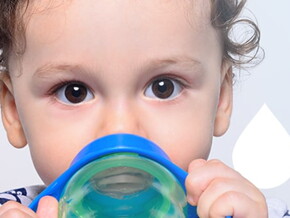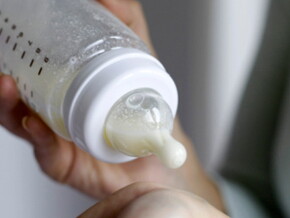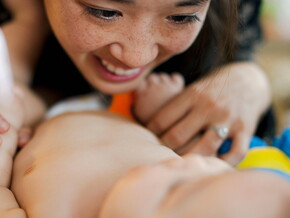
In some countries, over 90% of women are still breastfeeding at 12 months, while in other countries that number is 25%. By still breastfeeding when your baby is 10 to 12 months old, you join these moms who are breastfeeding their babies at one year of age. Be assured you are giving your baby the very best start in life.
Tips for… breastfeeding your 10-12-month-old
- If your baby seems less interested…
Don’t be put off! Your baby may seem distracted, but this is only because they are becoming more aware of their surroundings and finding more and more to interest them everywhere.
- If your baby’s biting…
Biting doesn’t mean the end of breastfeeding. Instead, take your baby off your breast. Speak to them and tell them ‘no’ in a calm but firm voice. If they continue to bite, take them off your breast again and try another activity or give them a teething toy.
- If you are going back to work…
You can still continue to breastfeed by pumping and storing your milk so they can drink expressed milk during your working hours. They will quickly become used to breastfeeding only at certain hours, such as morning and evening.
Tips for… giving your baby the calories he needs
- Breast milk is still important…
At 10-12 months, half of your baby’s calorie needs are still likely to be met by breast milk.
- Breast milk as well as complementary foods…
Naturally, as your baby’s intake of solid foods increases, the amount of breast milk they drink will go down.
Tips for… breastfeeding after 12 months
- Breastfeed as you have been…
If you are breastfeeding, let your baby continue to lead the way and feed on demand.
- Breastfeed when you are together…
If you are breastfeeding when together and expressing milk while separated from your baby, you may choose to decrease the amount of breast milk you are pumping when your baby turns one. When you are away from your baby, your baby’s caregiver may offer nutritious foods, water, and a small amount of pumped breast milk or whole cow’s milk.
- Breastfeed at certain times of day…
Some mothers find it helpful to breastfeed first thing in the morning and before naps and bedtime – when their baby is more interested and less distracted. In addition to receiving the benefits of breast milk, these times are often about comfort and closeness, too.
Sources
Breastfeeding handbook for physicians. 2nd ed. Elk Grove IL. 2014
Lawrence R, Lawrence R. (2016) Breastfeeding: A Guide for the Medical Professional. 8th ed: Elsevier.
U.S. Department of Health and Human Services Office on Women’s Health. Your guide to breastfeeding (updated 2017)
https://www.womenshealth.gov/files/documents/your-guide-to-breastfeedin… (Accessed April 11 2018)
World Health Organization. Infant and young child feeding: Model chapter for textbooks for medical students and allied health professionals. Geneva, World Health Organization, 2009.





















